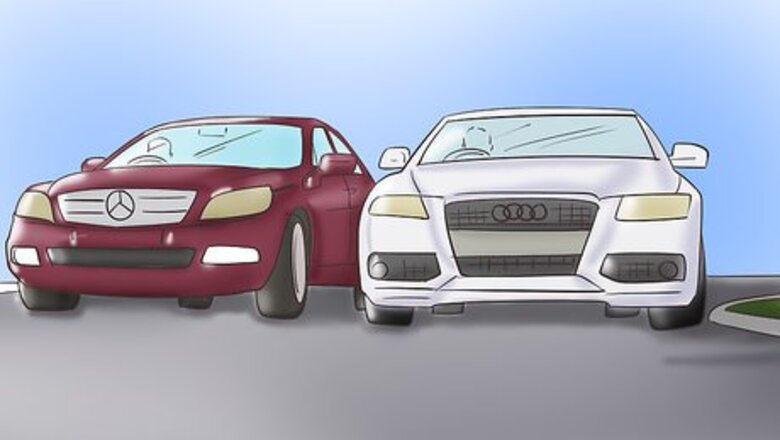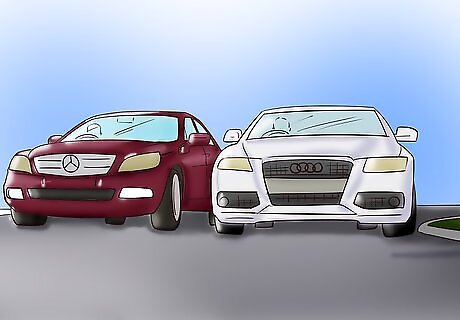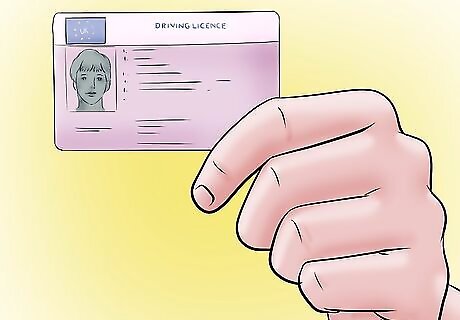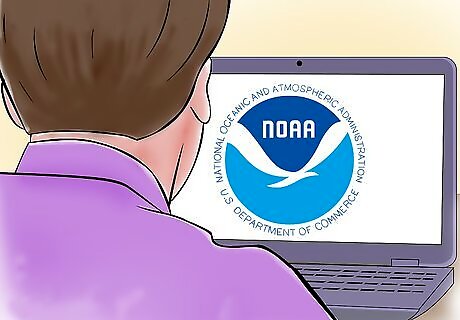
views
Planning your Financing Options

Shop for a car you can afford. Getting a car loan is not impossible as a newcomer to the U.S., but there are some additional difficulties. Start out by shopping around, perhaps for a used car, that will be cheaper. If you can afford to pay cash, then you won’t need to worry about financing.

Research the lenders’ credit requirements. If you need a car loan, understand that different banks or credit unions have different requirements regarding prior credit history. You will want to shop around and ask. It is possible to get a loan as a foreigner. Just be prepared that you may need to pay a bit higher interest rate.

Consider where the car will eventually be based. There may be shipping restrictions across borders by the lender while debt is owed. In addition, if you're planning to take the car out of the United States, foreign countries may lack repair facilities for your vehicle or require engine modifications before you can legally drive.

Try an expat-specific financing company. Before you move to the United States, begin researching "expat car leasing and financing companies." You will find a variety of companies, like Expatride, International AutoSource, and many others. These companies offer financing and leasing rates to expats at competitive local prices. If possible, contact a company before you move to the US to take advantage of special offers and savings.

Compare bank rates with dealer lending rates. Many buyers may not realize that banks are not the only lenders. Most new car dealers will also handle their own financing. In some cases, if you finance your car purchase through the dealer, you may be able to get a better rate than you could get at a bank or other finance company. Research the conventional lenders first, and then keep these numbers in mind when you are shopping for cars.

Consider leasing as an alternative to buying. Work with the expat car service to get a better understanding of which of these options work best with your visa length and planned stay time in the country.
Getting Car Insurance

Make sure you can legally drive in the U.S. In order to drive in the United States, you will need a recognized form of driver's identification. If you have a foreign license written in English, you can use this license as a visitor or for a time after you become a resident (the specific time varies by state). However, if your license is in another language, you will have to get an International Driving License (IDL) from your home country before you visit the U.S. If you plan to immigrate, you will need to exchange your foreign license for a U.S. one within a certain amount of time. Residents of the following countries may do so easily through reciprocity agreements: Canada. France. Germany. South Korea.

Understand the obligation. In most of the U.S., you are required to have car insurance in order to drive. Before you are able to drive your new car away from the dealership, you will have to show proof that you are insured. New Hampshire is the only state that does not require car insurance, but even they highly recommend it.

Find out the insurance requirements for your state. Although generally we say that every state requires you to have automotive liability insurance, the minimum requirements are different from state to state. In addition, lenders will usually require comprehensive and collision insurance for new cars. You will need to identify the requirements for the state where you intend to buy and register your car.

Secure affordable auto insurance. Shop around, before you come to the U.S. or after you arrive, to find the best rates. Your expat car service should be able to help you secure auto insurance at an affordable rate.
Finding and Buying a Car

Consider your needs. When buying a car, you will want to consider such things as the size (how many people are in your family?), the distance you will need to travel, and whether good gas mileage is important to you.

Research your options. Take the time to research and become familiar with your vehicle options. Available manufacturers in the U.S. may differ from your home country. Consider asking your expat car service representative questions about the available vehicles.

Negotiate the best price you can. In the U.S., prices for most items are set by the merchant and are not negotiable. Cars are different. Cars are listed with a “sticker price” (that is the price on the sticker posted in the car’s window). Most dealers, however, expect that you will make an offer that may be a few thousand dollars less than the sticker price. For a used car, there is usually even more room for negotiation. Some keys to good negotiation include: Research the car you want before you begin negotiating. After you have completed your shopping and you believe you have found the car you want, research it thoroughly. Using online sources like KellyBlueBook.com or Edmunds.com, you can look up the values of both new and used cars. These will give you a starting place for your negotiating. Have a target price in mind. Before you begin the process, you should know what you want to pay, and then a higher amount that you might be willing to pay. Use leverage to your advantage. When you are negotiating a price for a car, let the salesman believe that you are willing to walk away and go buy a different car from someone else. If they know they might lose your business, they may be willing to lower the price. Focus on the car’s price, not the monthly payments. Many car salesmen will try negotiating the price in terms of monthly payments, rather than the total. If you do this, you run the risk of adding thousands of dollars to the price without really noticing it. Keep the conversation focused on the total price.
Registering Your New or Used Car

Let the dealer handle it, if you are buying from a dealer. Almost all professional car dealerships, whether you are buying a new or a used car, will do the work of registering a car and getting the license plates for it.

Contact the Department of Motor Vehicles for the state where you reside. Each state has a Department of Motor Vehicles (or it may be referred as Department of Transportation, Registry of Motor Vehicles, or some other similar name). If you are handling the registration yourself, you will need to contact this office or review its web site and find out their specific requirements for car registration. A handy site with contact information for all 50 states is DMV.org.

Collect the information that you will need to register your car. In most states, before you can register your car, you will need to get the following pieces of information: A registration application, which you can usually download from your state’s DMV web site. The title for the new car, showing your name as the owner. A lien might be on title if it has been financed. Proof of a satisfactory vehicle inspection. In most states, every car must pass a safety inspection in order to be registered. Some states also require an emissions or pollution test as well. You will need to take the car to a licensed mechanic or testing center to get inspected. If you have not registered the car yet, you will not be able to drive it to the inspection location. If you are buying a used car, you will probably drive the car with the seller’s license plates to the inspection site, and then you will be able to get your own registration. Proof of insurance. Payment for sales tax and other registration fees. Check with the DMV web site in your state to determine what this will be. It varies from state to state.
Shipping Your Car Overseas

Select the type of transport. If, after you are through in the U.S., you choose to return home with your American-bought car, there are essentially three different choices for shipping. They vary based on time, cost, and security. Roll On, Roll Off (RORO): Vehicles are driven directly onto a ship and are lashed down. The travel time across the ocean (from the east coast to Europe, or from the west coast to Asia) is approximately two weeks. The cost is reasonable, but there is a risk of damage or theft. Containerized Shipping: About six cars at a time are loaded into a closed, locked container, which is then loaded onto a ship. This is a more expensive alternative but provides added security than the RORO method. Air freight: This is the most secure and fastest method of shipping your car. It is also the most expensive.

Clear your car through US Customs as part of shipping it. You will need to show the title that you received when you purchased the car, showing your name as the vehicle's owner, in order to go through Customs. If you purchased the car at an auction (primarily for dealers), you would need the auction gate release and a report from the DMV showing that the title is clear.

Protect your car and personal property for the voyage. Many shipping companies recommend that you remove any personal property from inside the car before shipping it. At least one source suggests that you protect your car seats and dashboard with plastic sheeting. You also need to deliver the car to the shipper with as little gas left in the tank as possible.

Remove your license plates and personal papers from the car. Before shipping take these items off the car. Make sure that you have the title and registration, along with any other private information or personal identifying paperwork, with you before you leave the car with the shipping company. Take these materials with you then when you pick up your car at your destination.




















Comments
0 comment